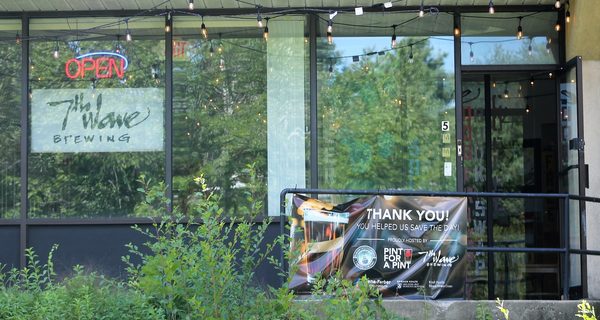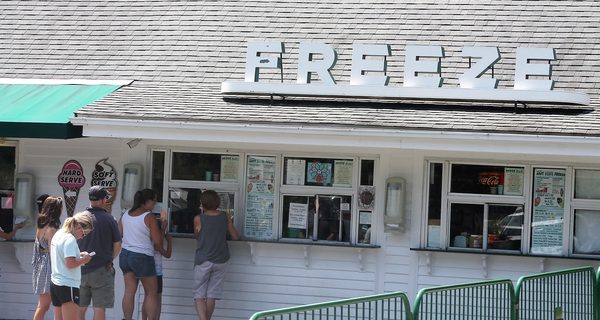Creating outdoor eating spaces was a huge thing for restaurants that didn’t have them before.
By James Kinneen
Hometown Weekly Reporter
While many businesses have had to deal with the effects of COVID-19, few have struggled like restaurants. From lockdowns keeping their tables empty, to supply chain backups taking beloved meals off the menu, all the way to employees needing to take time off either because of their age or the age of people they live with, restaurants have had to adapt to continuously changing circumstances.
But while many shut down, when speaking with people from those local restaurants that have managed to stay afloat thus far, a few patterns emerged: the ability to make adjustments using the tools available to them, an appreciation of the support from the community, a nervousness about future lockdowns and mandates, and a complete lack of joy about less competition from shuttered restaurants.
Unsurprisingly, constantly adjusting to changing circumstances was mentioned by nearly every restaurant. By and large this came in the form of moving to takeout and curbside pickup.
“Within a week after lockdown we rolled out curbside pickup realizing a lot of folks still wanted to purchase but were afraid and didn’t want to get out of their car and didn’t want to have exposure to any people” explained Dennis Budwey, GM of Blue Moon Bagel Cafe. Budwey, who also noted Blue Moon signed up for DoorDash delivery. “We thought curbside would help us fulfill that need. And that spiked our business, but with doing curbside there's a lot to adjust to: how to take the order, what information you need, how to make sure the orders are accurate.”
But while the transition to curbside was easy for some, for others it was more difficult. Some even had curbside issues related to - well, the lack of a curb.
When 7th Wave Brewery tried their curbside to-go, they found that being located on top of a hill wasn’t the best situation.
“The curb is so far,” noted 7th Wave Head Brewer Justin. “Other breweries, they walked up and you were feet away. But for us, you have to come all the way up here, or we’re coming all the way down there. You’re going to feel bad and meet us halfway.”

For Marie Adams and Bubbling Brook, adaptations included adding sundae kits, changing traffic patterns, having a worker outside to monitor and clean the tables (when they were finally allowed to let people sit at their outdoor tables) and making some new Oreo ice cream sandwiches.
Clyde’s in Walpole added outdoor seating as well, though they had to move it to the side of the building after a couple accidents on Route One meant it was safer not to be out front. While there was no good time to be dealing with COVID, Clyde’s did get a bit of help from a local hotel. Just next door, right before COVID hit, the hotel opened, sending a lot of business to the restaurant.
But talking to Tom Graziano, it was clear the community support was what was really keeping Clyde’s open throughout the pandemic. This was something that was constantly reiterated by all the restaurants: that longstanding relationships with the community from before COVID hit were pivotal to staying afloat once the pandemic arrived.
“The partnership part really comes in, first and foremost in that Dan and Linda have spent 26 years in this community as a partner with so many organizations - churches, the Council on Aging, the senior center - so there was a huge amount of loyalty in the area that had concern for our business and really went out of their way to support us,” Budwey explained. “I think after the initial shock of the COVID lockdown back in March, where everyone sort of froze and things got really scary for about a week or so, right away we saw more traffic than we thought we were going to get and it just sort of grew from there. So many people said 'we have to get out, and the first thing we thought of were all the local businesses so we’re getting our lunch from you or we’re getting our breakfast from you.' So that kept quite a bit of flow coming.”
For some of the newer establishments, those relationships may not have had the time to develop, however. So on top of making pizzas for the first time and updating tons of systems that weren’t working as well as they could have been, 7th Wave Brewing took the opportunity to revamp their entire space in order to become not just a local hangout, but a destination people would be willing to seek out and travel to.
“We took the first month just to change the outer appearance of the building a little bit to try to attract more people in, and then we changed the game room and started posting online ‘look we’re doing this and this’, and got really into doing unique styles of beer. We did our blueberry saison with sage smoke and basil to try and attract the beer geeks, because before it was kind of like the local pub where you came bought your beer and left - and we wanted to change the atmosphere to be a place people would drive to and a destination to come to. So we did a lot of work on the inside, revamped the whole area and then did the outside.”
Unfortunately, even the most beloved local hangout can depend on traffic to get by. For the Bubbling Brook, the famous perennial hangout spot of Westwood and Walpole high schoolers and little league teams, COVID meant that there just weren’t as many people getting together to come by. While that had a huge impact, this year’s weather hasn’t helped either. Adams noted as much as people love their food and ice cream, people just don’t come around when the weather is bad, as it has unfortunately been nearly all July.

One of the things that make that especially unfortunate is that Bubbling Brook has been eating the costs of fried clams and lobsters for their customers. With COVID-related supply chain issues, clams are absurdly expensive - so much so that many restaurants have taken them off the menu completely. But since Adams explained people come to Bubbling Brook in the summer for the clams, they’re not willing to take them off the menu - they’re just opting not to make much money on them.
“We haven’t completely taken things off, but there was an issue with chicken breasts. There are a lot of issues with paper products. The seafood is through the roof; the native fresh clams we get are over $300 a gallon, which is like triple the usual cost, and the lobster is over $50 a pound for fresh lobster meat. When you deal with fresh seafood you deal with a lot of price fluctuations, but that’s the highest we’ve ever seen it.”
Blue Moon Bagel Cafe streamlined some things, going from both reduced fat and regular cream cheese in all their flavors to regular only, while all the restaurants noted the crazy price issues they’ve dealt with trying to get paper products. They also changed their hours, while Bubbling Brook opted to close on Mondays.
But while things seem to be getting back to normal, the possibility of another round of lockdowns loom. While that strikes fear into all restaurants, there is at least the knowledge that they will have learned how to operate as a takeout restaurant from the first go-round.
“If we get shut down again, obviously we will have to go to all takeout again - but this time around would be a lot more organized and we’d be a lot ready for it because we just did it for a year and a half,” Graziano explained.
Dennis Budwey, however, was quick to note nobody in the industry wants that to happen.
“We’re not past it by any means and now with the spike that’s happening and the new variant, we’re all holding our breath that we don’t have to go backwards.”
But while one would think every bar or restaurant that closes means less competition for those around, that idea was quickly dismissed by everyone. Adams talked about how she empathized with anyone whose business had to shut down, while Graziano went so far as to say about the mom-and-pop restaurants he’s seen close: “We wish we could have helped them out more.”
Nothing, though, can help restaurants keep their doors open like being able to keep their doors open.
As the threat of the delta variant and a second round of lockdowns looms over them, local restaurants that made it through the first year of COVID continue to tweak their business models and adapt to whatever comes next.






















